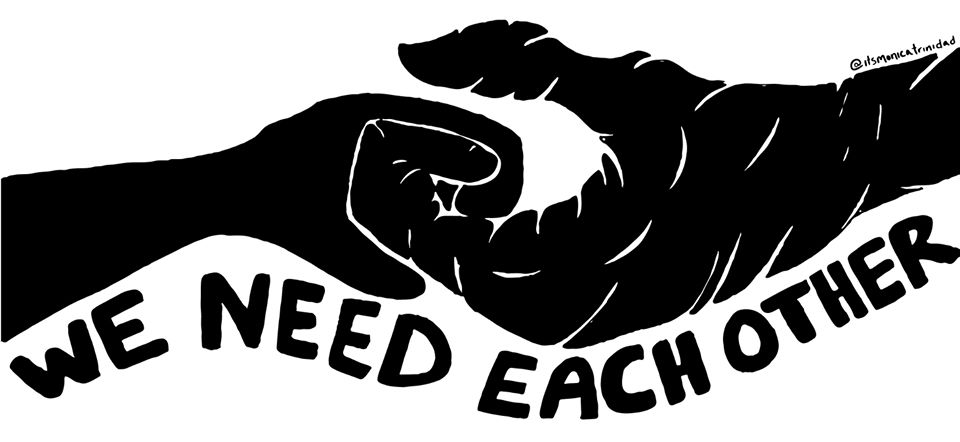
We find ourselves at an interesting moment. Pivotal, in fact. As we collectively attempt to navigate uncharted waters, I am constantly thinking about how prepared I am. For a large portion of my life, lockdown was my reality. This in no way suggests that our current shelter-in-place order is comparable to the physical lockdown currently being experienced by two million-plus incarcerated men and women across this country, because it’s not. However, there is something that lockdown and shelter-in-place have in common: it forces us, and allows us, to be still.
For many of us our daily routines have been disrupted, our financial stability tested, and we search for certainty in this uncertain time. We frantically watch the news and mine through countless articles in Google, as we attempt to fact-check the multitude of social media posts that attempt to keep us informed or misinformed. Well at least I do.
It is in these moments when I am reminded of a different time and a different place. It is in these moments when shelter-in-place conjures up memories of being on lockdown while in prison. For 23 years the Illinois Department of Corrections was my place of residency. When I was released from prison five-and-a-half years ago, I could have never imagined that I would once again be faced with a “lockdown,” or anything remotely similar.
Prison is an entirely different place while on lockdown. On lockdown all prison movement comes to a complete stop; it is a wholly different experience from being simply locked up. On lockdown our daily routines were disrupted as we were confined to our cells for 24 hours a day for the duration of the lockdown. Those of us who were most fortunate or simply better prepared often fared better as the prison economy came to almost a complete halt. There was no work unless you were essential to the daily operation of the prison. There was no commissary (prison store where food, clothes, and toiletries are purchased); all you didn’t have you simply didn’t have, or you relied on those who did. Kites (informal prison mail), lines (modes of delivering kites and other items), and anyone who could get out of their cell were our primary and often only source of communication. We searched through either cell bars or windows for any signs of movement; we stopped officers daily in search of information that would give some idea of how long the lockdown would last.
It is in these moments when these two worlds, “Shelter-in-Place” and “Lockdown” collide, that I remember the lessons of those lockdowns. There was so much that I learned about myself and others during them that at times I would secretly wish for lockdowns.
Lockdowns, much like shelter-in-place, forced me to be still. They stripped away all the daily distractions, and allowed me to not only see myself, but others. Lockdown forced me/us to rely on one another in ways that ignored typical jail/prison politics. It is in these moments that our common humanity overrides physical and philosophical differences.
Prison can and often is a very contentious place. For most of us the lines are drawn long before we set foot on a prison gallery/tier. Race, ethnicity, gang/organization affiliation, sexuality, and even type of crime serve as demarcations, but lockdown changes all that. Necessity blurs and sometimes erases these boundaries, and one lockdown in particular helped me understand this.
It was either 1993 or ’94 and we were once again on lockdown. We’d just come off lockdown the day before, yet here we were again. We had not been able to go to the commissary due to the previous lockdown, so resources were scarce. At the time I was living in a two-man cell by myself, so when the Correctional Officer said that I would be getting a cellie (cellmate), I wasn’t surprised. When they brought the guy to the cell door we both looked at the officer questioningly. “Are you serious?,” we both asked. The officer said to my new cellie, “yes, we short on cells, but as soon as a cell comes open we will move you out.” The problem here is that we were part of two different organizations, and at that time in prison you were basically housed based on your affiliation. The housing of two active members with “opposing” affiliations rarely if ever happened, yet here we were. We would spend nearly two months in that cell together, and in those two months we would not only share whatever commissary, information, and knowledge we had with one another, but encouragement and hope as well. In the stillness of those two months, I daresay we became friends. When the lockdown ended and prison politics resumed he moved out, but our relationship remained, because we now saw one another.
During this shelter-in-place so many of us have stepped up and stepped beyond our physical and philosophical differences to help and serve those that need it most. We have banded together in a sense of shared humanity to support one another in these challenging times. As we move in what seems to be a frenetic pace towards the end of shelter-in-place, let us not forget these moments where in our stillness we were able to see one another for the first time.
This is a lightly edited version of a piece previously published on the ConTextos Chicago blog, at https://www.contextos.org/chicago/blurs-and-erases/.

Johnny Page is a formerly incarcerated student, activist, speaker, author, anti-violence educator, and advocate. He’s committed to fighting for the right to access higher education for the incarcerated and creating pathways for the formerly incarcerated on traditional campuses. He is a cofounder of C.A.V.E. (Community Anti-Violence Education), an intergenerational community-based support system for those affected by trauma. He is currently Co-Director of Programs and Partnerships for ConTextos, an organization that explores trauma and other complex issues through memoir writing as a mechanism for healing, in Chicago.
1,203 total views, 2 views today
